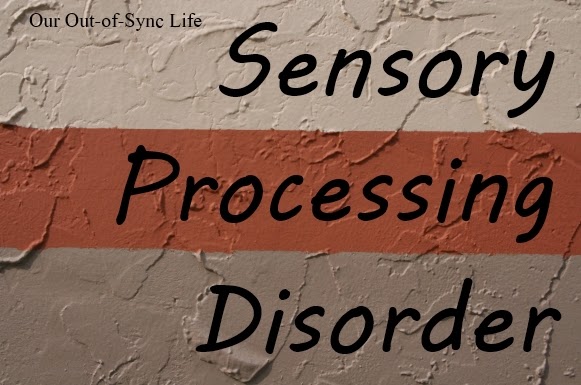 |
| credit |
On Wednesday, I explained my desire to come around those who are raising children with disabilities as well as train others how to love on these families. Today is the first post in this series.
If you have read many posts on this blog, you have seen the term “Sensory Processing” several times. But, what exactly is it? What does it mean?
Let me begin with some technical jargon.
Going by the names of sensory processing and sensory integration (SI), these terms refer to “the way the nervous system receives messages from the senses and turns them into appropriate motor and behavioral responses.” No matter what you are doing…eating, playing, reading, exercising…the activity can only be successfully completed due to correctly processing the sensations or “sensory integration.”
When the body doesn’t interpret the senses correctly, the person may be diagnosed with a disability called Sensory Processing Disorder (SPD). By definition, SPD is “a condition that exists when sensory signals don’t get organized into appropriate responses.” The person is unable to correctly interpret sensory information causing issues with “motor clumsiness, behavioral problems, anxiety, depression, school failure, and other impacts.”
Children with SPD can benefit from occupational therapy (OT) that incorporates sensory integration.
Now that I have given you the technical info from www.spdfoundation.net, let me give you the Momma Heidi explanation.
When thinking about the word “sensory,” remember the five senses – taste, touch, hear, smell, sight – as well as movement. In one or more of these areas, the person’s brain doesn’t understand the sense he or she is being confronted with. Either the sensory is too much or too little. If it is too much the person will do whatever he can to remove the sense. If the person desires the sense, he will do everything in his power to get more.
Here’s an example. Bubs and Little Man both abhor loud sounds. If either of them even thinks that a loud sound could occur, the hands go to their ears for protection. The sense of hearing (loud noises) is one that they both struggle. For example, getting Bubs to use a public bathroom was very difficult because of the anticipation of the toilet flushing. (I don’t know why public toilets have to flush so loudly!)
Little Man craves movement. During Occupational Therapy, his OT would lay him on a large “lazy Susan” and spin him in a circle for one minute. At the end of the timer, she would stop the spin and began spinning in the opposite direction. It made me dizzy just to watch him! On the contrast, the OT had to slowly increase the height she pushed Bubs on the platform swing. Both with sensory issues but the extreme opposite side of the spectrum.
The challenge of raising a child with SPD is that the child is scared of, threatened by, and fearful of items in daily life. For those children who are sensory seeking, the needs can be extreme. It is exhausting trying to provide the need while integrating the dislike
Since Sensory Processing Disorder was Bubs’ first diagnosis, you will find many posts on this blog concerning this. Below is a list of the most popular posts dealing with Sensory Processing Disorder. Of course, you can read the rest by viewing the entire Sensory Processing Disorder category.
- Ideas for Home
- Helping Your Sensory Child Out of Meltdown
- The Importance of Jumping
- Volume Control Help and Chart
- Oh Mister Moon: Charting Behavior
- Appropriate and Inappropriate Ways to Handle Situations
- Stopping a Catastrophe Before it Starts
- Creating a Visual Schedule
- Providing Sensory Input When Away from Home
- Teaching Emotions
What questions do you have?
